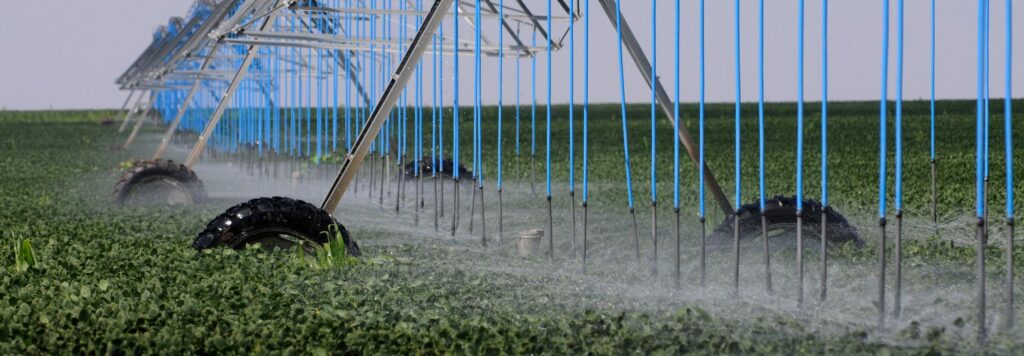Creating chocolate has the potential to do so much more than be a Valentine’s treat or an end-of-meal indulgence.
Approximately 75% of the cacao pod is discarded during the cultivation, harvesting and consumption of cocoa beans. However, if parts like the husk, pulp and bean shell were collected and managed properly, these byproducts could help raise farmers’ incomes, revitalize degraded landscapes, provide food and even produce clean energy.
What’s the difference between cocoa and cacao?
The two terms can often be confused, but there’s a distinction:
Cocoa refers to the value chain, farmers and beans.
Cacao refers to the fruit (pod), trees and byproducts.
Rethinking the Cocoa Process
Cocoa production is big business for many: In 2021, its global trade value was $9.59 billion. It’s a high-value cash crop and an important export throughout the “Cacao Belt” (tropical production regions near the equator, such as countries Côte d’Ivoire, Ghana and Ecuador.)
Côte d’Ivoire and Ghana in West Africa are the world’s largest cocoa producers, together contributing over 60% of global cocoa production volume. Cocoa farming employs nearly 600,000 farmers in Côte d’Ivoire, ultimately supporting nearly a quarter of the country’s population, or 6 million people. In Ghana it employs more than 10% of the total population, or 3.2 million farmers and workers.
Yet smallholder farmers who make up most cacao producers live on an estimated $2 a day. Moreover, the cocoa industry produces approximately 700,000 tons of waste annually and is a highly inefficient burden on land in its current state. Only the beans are harvested to produce cocoa mass, butter, powder and chocolate. Most of the cacao pod is not utilized and is left to decay on the ground, which damages fertile soil as it degrades. This material, if properly salvaged, can be harnessed for productive purposes.
The cocoa value chain has driven deforestation in nearly every country where cacao is produced, as rainforests are cut down to make way for monoculture plantations. In Côte d’Ivoire, it is estimated that 40% of cacao comes from protected areas. Increasing global demand for chocolate, coupled with decreasing cocoa prices, has put pressure on farmers to continue to clear land to plant cocoa — as opposed to using agroforestry systems, in which cacao is planted under shade trees, increasing carbon capture and biodiversity conservation. Environmental campaigners say that if deforestation continues unhindered, Côte d’Ivoire risks losing all its forest cover by 2034.

Introducing the practices of a circular economy for cocoa – in which all the organic material currently lost or wasted throughout the production chain is utilized – will not only provide environmental benefits but its byproducts can bring more revenue to the farmers.
Getting the Most Out of Cocoa
The discarded organic material from cocoa production holds significant potential to be transformed into various products with valuable economic and environmental benefits.
Cacao pod husks, for example, can be repurposed as an alternative animal feed source (once processed to remove a harmful toxin), providing a sustainable and nutritious option for livestock. Additionally, it can be converted to biochar, which then forms a potent compost. Compost made from cacao pod husks can help improve soil quality by adding organic matter and enhancing soil structure, promoting healthier crop growth.

Pod husks can also be used as biomass for electricity production, offering a renewable energy source and reducing reliance on fossil fuels. Research has been conducted on using cacao pod husks to generate electrical energy in Uganda, which faces electric power supply obstacles, predominately in rural areas. The research concluded that using agricultural waste for energy generation is typically most suitable in rural farming areas, where pollution-free raw materials are readily available in large quantities. The potential to scale this innovation is significant within cocoa-producing countries and could help improve access to electricity.
As cocoa farmers know well, cacao pulp extracted from cacao pods during fermentation makes for a delicious, sweet drink. Rich in nutrients, cacao pulp can be used in beverage and food production. The pulp has been commercialized with various companies specializing in cacao pulp drinks.
Cacao bean shells, another byproduct of cocoa processing, also have potential productive uses. These shells can be ground into cocoa flour for use in cooking and baking. Cocoa flour is rich in theobromine, dietary fiber, minerals, vitamins and antioxidants, which make it a healthy, gluten-free option to traditional flour.
Bean shells can also be used as mulch in gardening and landscaping, helping to suppress weeds and retain soil moisture. Moreover, bean shell biochar can be used as a natural fertilizer, improving soil health and promoting sustainable farming practices.
The Benefits
If made economically viable, repurposing cocoa byproducts can bring clear benefits to smallholder farmers, nature and the climate.
By finding profitable uses for byproducts such as husks, pulp, and shells, farmers can generate additional income streams, thereby improving their livelihoods and financial stability. This economic empowerment can lead to increased resilience and autonomy within cocoa-producing communities, reducing reliance on volatile commodity markets.

Nature will also benefit. Removing discarded pods from the ground, preserves ground soil fertility and allows farmers to help minimize soil acidification and nutrient depletion, promoting healthier soil ecosystems. This, in turn, promotes higher yields on the cocoa plants, so farmers don’t need to clear additional land or forests to plant more crops. This leads to increased biodiversity and ecosystem resilience.
Additionally, by using byproducts as alternatives to chemical fertilizers and pesticides, farmers can reduce their environmental footprint and promote sustainable agricultural practices.
Repurposing cocoa byproducts can also contribute to climate change mitigation efforts. By reducing emissions associated with waste decomposition and deforestation, circular practices can help mitigate the impacts of climate change on cocoa-producing regions.
The Barriers
Despite the many benefits of reusing cocoa byproducts, there are significant barriers to its widespread adoption and scalability within the cocoa industry.
One major challenge is the lack of infrastructure and access to technology for collecting and processing cocoa waste. Many cocoa-producing regions lack the necessary facilities and equipment for efficiently collecting, storing, and processing waste products such as the pod husks, pulp, and shells. Poor infrastructure and high costs mean farmers may struggle to extract value from waste materials and incorporate them into their production systems.
Financial barriers also hinder the scaling up of circular initiatives. Smallholder farmers often lack the resources needed to invest in the necessary equipment, such as to produce biochar. Additionally, the uncertain viability of circular projects deters investors from providing the necessary funding and support.
Another challenge lies in integrating circular practices into existing cocoa supply chains. The cocoa industry is characterized by long and fragmented value chains, with multiple stakeholders involved in production, processing and distribution. Coordinating efforts to productively reuse cocoa byproducts and incorporate them into existing supply chains requires collaboration and cooperation that may be difficult to achieve.
Promising Initiatives
Despite these barriers, several inspiring projects and initiatives are underway to build a circular ecosystem for cocoa and promote sustainable practices within the industry.
One notable initiative is the Circular Economy Cocoa: From Bean to Bar project, led by organizations such as Helvetas Vietnam and funded by the European Union. This project aims to transition Vietnam’s cocoa and chocolate subsector by introducing regenerative and circular economy practices such as resource efficiency. By establishing circular economy business models for companies early in the product life cycle, the project seeks to create an ecosystem that supports closed-loop and circular production, providing an example for others to follow and informing supportive policies. The project is currently working with 3,500 cocoa farmers and 500 farm employees and other cocoa-related businesses.
Another promising project is the Côte d’Ivoire Biomass Electricity Production, a 73.6MW biomass power plant under development in the ‘Sud-Bandama’ region of Côte d’Ivoire, using cacao pod waste. This region has 1.8 million tons of unused pods. Using 400,000 tons of pods per year, the power plant will provide around 500 GWh of reliable, clean energy to the nearby grid all year.
Companies like KOA meanwhile, are capitalizing on the potential of cacao pulp drinks. Founded in Ghana, the company uses a decentralized collection method to buy cacao pulp from farmers and processes the otherwise discarded pulp into profitable products that feed back to the farmer. KOA offers training to small-scale farmers by equipping them with the knowledge and methods to process previously discarded cacao pulp and has served more than 2,200 Ghanaian farmers.












